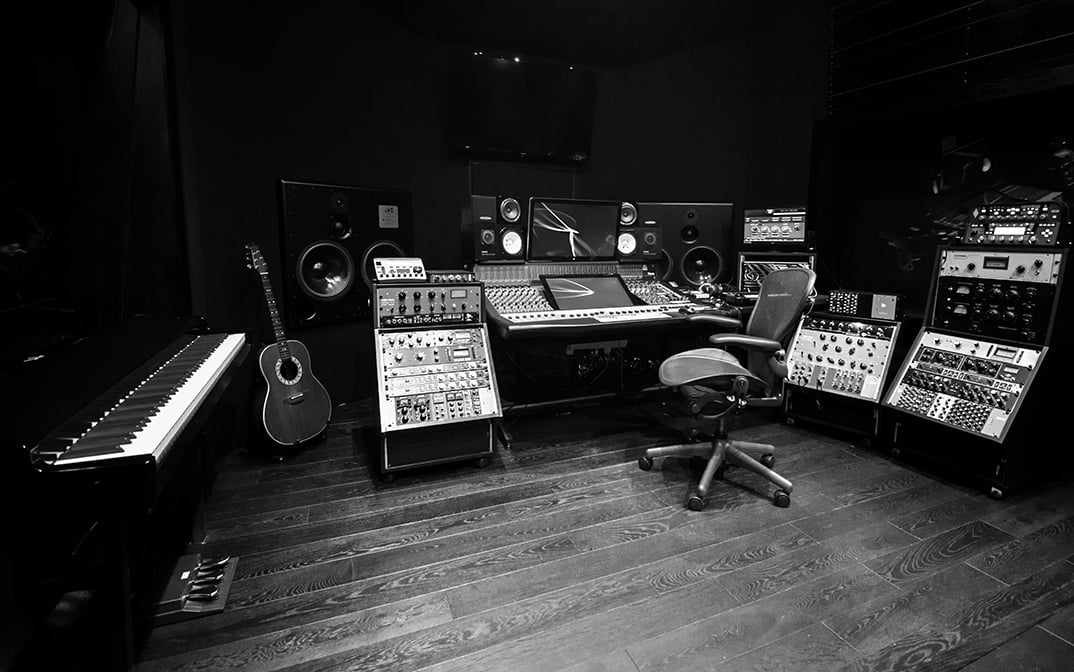In this serie:
It is a legitimate question, in fact a computer today can be used to create a recording studio to create even complex works which until recently would have required the use of a real studio, equipped with gigantic mixers, multitrack recorders reels and every blessing tools.
However the response to this question is long, and therefore I will divide it into different parts.
introduction
The recording studio is a fundamental part of music production process, as it directly influences the quality of your final product, let’s say the record.
These studios each have a distinctive sound, influenced by available equipment and recording environments (it’s easy to imagine that having a large room to record in will produce a sound with unique natural reverb, for example).
Over time some of these studios have become legendary, for example the Abbey Road Studios or the Sarm Studio, used by very famous bands (Led Zeppelin, Beatles, Pink Floyd, Bob Marley tell you something?).
Furthermore, each of these studios had several legendary sound engineers, able to manage and create great works such as Atom Hearth Mother or The Lamb Lies Down on Broadway, and many other works that have made the history of modern music.
Thus the combination of studio equipment and sound engineer was a fundamental must for any artist who wanted to try their hand at making the fundamental album of their artistic career.
The studio itself was equipped with gigantic mixers, huge multitrack reel to reel tape recorders, walls of audio and effects equipment, miles of cables. The musicians and sound engineers communicated behind a large window, which divided the musician from the actual studio.

A legendary multitrack Otari MX 80 Tape Recorder
All of this equipment had one thing in common: they cost a fortune and to be able to afford to do a studio production you had to have a fat wallet (here come the legendary producer, a guy that have the ability to find the money needed for pay the studio).
Each instrument had to be recorded on a single track in order to be able to mix it with the rest of the instruments later, but the tape recorders and magnetic tapes of that era had physical limits, so the sound engineers had to resort to particular tricks such as bounce, transferring some tracks to a single one to free space on the tape. There was no copy/paste, and in the case surgical cuts of the tape were used, which was glued to the joint with adhesive tape. To record complex arrangements (think for example of those of the historical Pink Floyd) the life of the studio was not easy at all.
Life wasn’t easy even for aspiring musicians: to spread and sell your work you needed at least a recorder, and a Revox or a Teac cost a kidney at the time. Billy Studer, the inventor, was very happy dude.
Then a miracle happened: in the early 1980s Tascam’ produced a small integrated portable studio, called Portastudio, mixer and 4-track recorder on the then common cassette tapes. Incredible.
The recording quality was certainly not that of a studio, the cassettes were certainly not equivalent in frequency response to those of an Ampex tape, but who cares! For an aspiring musician it was an epic step forward. Or at least for me it was
The home-recording wave, which allowed musicians to cheaply record and produce music at home was started, and is cited as one of the most significant innovations in music production technology.
I was the lucky owner of a Portastudio, and enjoyed it very much.
However, for now we are talking about analog sound on tape recorders, but the first computers for music are arriving, which record digitally.
Atari 1040 ST come in 1985, and the game change again. Its MIDI ports and VST technology will change the way music is produced forever. But this is the next episode.
Before go at Part 2, please look the following video, he explain a lot on recording process on a computer. Next step we need to talk about weird stuff like MIDI, VSTs and DAWs, so follow the given links to start understanding what they are.
We don’t want to be amateurs who just push the button, do we?
